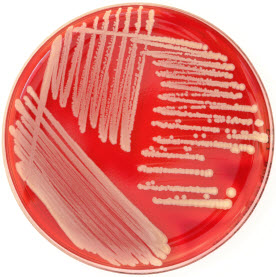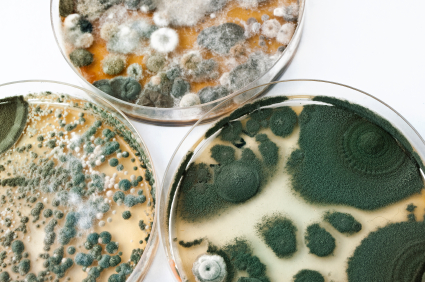Medical Resources: An Online Introduction to Microbiology
Your lungs breathe in up to 10,000 fungal and bacteria microbes every day. These microbes cause bacterial and viral respiratory disease like colds and pneumonia, tuberculosis and strep infections. Other microbes enter your body by touch, through your pores and other body openings. Botulism, worms and other parasites, urinary tract infections and sexually transmitted infections like herpes and HIV are common bacterial and viral infections.
The study of microbiology includes determining how microbes enter the body’s cells and replicate, interact with and feed off hosts. Some create mild disease, others virulent disease. Microbes are some of the world’s most ancient forms of life—and also the most dangerous.
General Microbiology
- American Society for Microbiology: Easy-to-read professional articles and educational resources for members and the public make this organizational site easy to navigate
- Microbe Library: Microbe Library 2.0 has a great variety of undergraduate microbiology resources.
- Virulence: Microbiology deals with how bacteria and viruses interact with their host and cause disease. This determines how virulent they are.
- Microbe World: Check out microbiology’s 50 most significant events from 1875-1995.
- Environmental Microbiology: This branch of microbial science spans many different and broad research, including: cleaning contamination, fish disease and climate change..
- Microbial Disease: An overview of selected diseases caused by bacterial and viral microbes.
Bacteriology
- The Virtual Museum of Bacteria: The exhibits provide links to fact sheets, consumer guides, scientific research and online lectures.
- Antibiotics: Antibiotics are prescription drugs that work against bacterial infection, not viral infection—and bacterial infections worldwide are becoming increasingly resistant to the antibiotics, causing a massive public health issue.
- The Evolution of Bacteria: Check out the bacterial clock to see how bacterial microbes have evolved through billions of years.
- Myxobacteria: These complex, unusual bacteria look a bit like trees, are multi-cellular and fruiting bodies.
- Everywhere a Germ: Toilets, sponges, coffee cups, bachelor pads and remote controls are frenzied breeding grounds for opportunistic germs.
Immunology
- What is Immunology?: Our bodies protect themselves against foreign invaders like bacteria, viruses and parasites—most of the time.
- Immunohistology Portal: Knowledge center, articles, search engines and videos for histopathology.
- Immune Reactions: Symptoms of and first aid for insect bites and stings.
- Inflammation Index: Extensive portal of images regarding immune system inflammation—not for the faint-hearted.
- Our Immune System: The human body’s mighty army that keeps us safe from microscopic invaders that can sicken us or kill us.
- The Immune Network: Discover how and why the body launches an attack against invading microbes and their search and destroy mission to keep you safe.
- Tutorials: Case studies, labs and tutorials teach about HIV/AIDS.
- The Immunological Synapse: A bit advanced, but with great definitions and image links.
- Glossary: Immunology glossary that’s layperson friendly.
Mycology
- Mycology Online: Fungal information as it relates to microbiology.
- Image Gallery: Yeast and various fungi images, gram stains and technical cases for the advanced student.
- The Fungal Kingdom: Fungi recycle dead organisms into nutrients and keep the life cycle moving along.
- The Fifth Kingdom: Biodiversity in the microbial world of mycology.
- Fungal Database: Search databases in either English or Spanish to find out everything you need to know about a specific fungus.
- Fungi Science and Mushrooming: One of the first mycology mushroom sites on the Internet (1995), MykoWeb still reigns as an authority on everything mushroom.
- Cornell Center for Fungal Biology: Mycology resources and a huge biodiversity-fungi project, including images and specimen information.
- Medical Mycology: Glossary covering medical mycology terms within the University of Adelaide's site.
Parasitology
- Parasites: Living within or on you are parasites that eats at your expense.
- Images: Pictures of parasites from A to Z—cross-referenced by parasite and parasitic disease.
- Protozoa and Microsporidia: A guide to natural North American enemies and how to biologically control them.
- Fact Sheet: Parasites and foodborne illness due to infestation—a good overview.
- Parasitic Images: Viruses, bacteria, single- and multi-cellular organisms—including intestinal worms.
- Bad Bug Book: Basic facts and glossary regarding foodborne microorganisms and the toxins they emit through the human body after ingesting parasitic food.
- Intestinal Parasite Symptoms: Signs and symptoms that you are an unwitting host to parasitic squatters.
Virology
- Virus Ultra Structure: Images of animal and DNA- and RNA-containing viruses.
- Virus Database: Follow the instructions for information on a particular virus.
- HIV/AIDS: Clinical, sociological and general viral information regarding arguably the world’s worst viral disease.
- Microbial Mugshots: Electron and confocal microscopy makes these viral and protozoan images come alive.
- Virology Presentation: Easy-to-grasp .pdf version of an Intro to Virology PowerPoint presentation.
- Virology Animations: Watch how a virus attaches and penetrates a cell—includes animations on egress, encapsidation, lambdaw, genome and T4 cell attachment.
Microbiology & Biotechnology
- National Center for Biotechnology Information: Lots of information here: science primer, databases and tools, model organisms guide, human genome resources and current news.
- Microbiology and Biotechnology: Learn about the field, take a look at some available resources and what careers may be available.
- New Trends in Microbiology: Biotechnology’s natural progression from microbiology leads to discovery and new paradigms for research. Also available as a PDF presentation.
- Microbes and Biotechnology: Without microbes, biotech science would not be able to address disease—microbes are the building blocks, the foundation, of the science.

